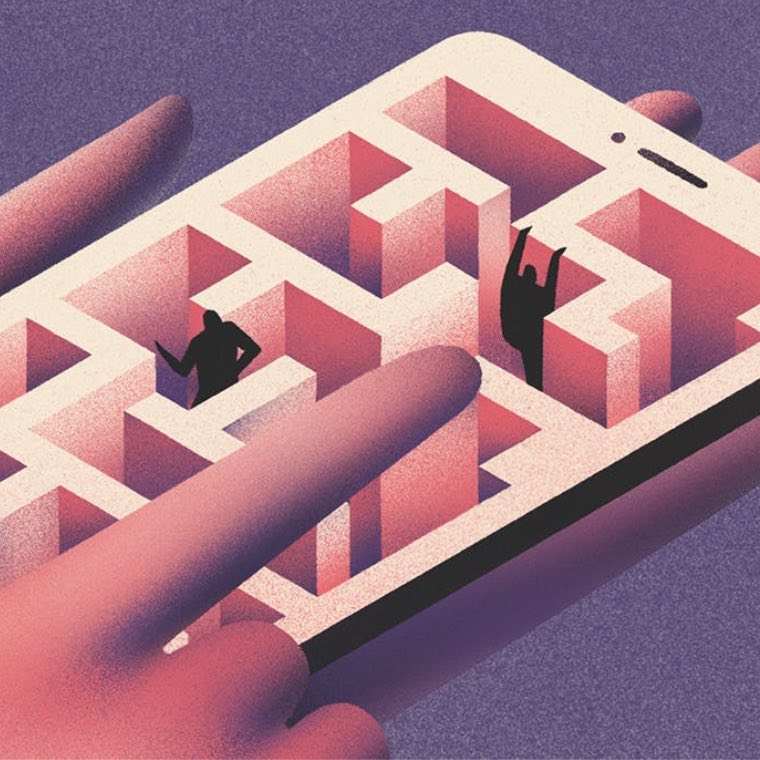
Culture
Does the creative industry have an ageism problem?
October 2024"The older, the wiser"—unless you're working in the creative industry, it seems. Seasoned creatives are experiencing a very different reality in today’s working world. Instead of being seen as experts in their field, they’re finding that their opinions and ideas are less sought-out, the jobs are dwindling and even disappearing altogether. It’s a common story. According to a survey by AARP, 82% of marketing and advertising employees fully expect to be aged out of the industry… even as early as their mid-30s. It’s even more of an issue for women, who have the double whammy of ageism and the gender pay gap to deal with.
The obsession with youth
It’s not hard to see why ageism is an issue that’s so prevalent in the creative industry, given its well-known obsession with youth — both in behaving like them and selling to them. The industry is forever searching for the next big, shiny thing, whether that’s the latest TikTok trend doing the rounds or the hot new GenZ influencers that brands are clamouring to work with. In a fast-moving world of technology, agencies seek ‘digital natives’ who can connect with their tech-savvy target audiences. “Older” employees, with their outdated meme and emoji use, are seen as unable to keep up with the fast pace of culture.
“Early in my career, I was often told I didn't have enough experience. One day when I had finally gotten more experience, I was told I was too old to understand the target group of a specific brand. I was around 35 at that point,” one employee wrote anonymously in a survey.
“Early in my career, I was often told I didn't have enough experience. One day when I had finally gotten more experience, I was told I was too old to understand the target group of a specific brand.”
Then there’s the issue of money, especially in times of financial strain. Grey-flecked creatives with more years of experience are naturally more expensive and agencies can find younger, social media-savvy employees at a fraction of the salary. As the industry evolves, job roles are also becoming more blurred, with employees expected to wear more hats (how often do we see the word ‘unicorn’ in creative job ads?).
The stereotype of older employees’ resistance to innovation is alive and well. “In the design and creative industries a stubborn prejudice prevails that older designers have less to contribute because of a supposed resistance to new technology. They are widely seen as not being open to change, difficult to train and generally not keeping up with the fast pace in agencies,” Sione Raaijmakers wrote in a piece for Design By Women.
A vicious cycle
The problem with alienating whole demographics in the creative process means ideas—and subsequent creative campaigns—perpetuate ageist stereotypes. Namely that older people are technologically inept, physically frail and less mentally fit. Outdated ads also alienate age groups with huge spending power.
According to a study by CreativeX, only 4% of people in ads are over the age of 60, despite that demographic controlling 25% of consumer spending. When older adults were shown on screen, almost two-thirds of them were featured in family and domestic settings and less than 1% were cast in ads that placed them in professional or leadership environments.
“Almost two-thirds of older adults shown on screen were featured in family and domestic settings and less than 1% were cast in ads that placed them in professional or leadership environments.”
Some brands are getting it right. Dove, which has built its brand on diversity and inclusivity, took a stand against ageism in 2022 with its #KeepTheGrey social media campaign. The brand said: “Women with grey hair are being aged out of the workplace, so Dove is going grey.” JD Williams also ripped up harmful stereotypes around getting older with its spring/summer 2023 campaign, which featured a diverse cast of empowered older models, all giving it plenty of attitude, accompanied by lines like “No it’s not my daughter’s, and yes I still look hot.” And we can’t forget Magnum, who worked with the iconic fashionista and muse, 101-year-old Iris Apfel (who sadly passed away in March this year). In the ad, Iris reaffirms that age is just a number, to enjoy the pleasures of life, and to live life to the fullest.
Getting to the root of the problem
A few brands taking a stand is not enough to move the dial on ageism, which needs to be addressed at the root of the problem: in the workplace. It begins with tackling the hiring process and company culture and Employer Portal’s Recruit, Retrain, Retain Checklist is a good place to start. It includes guidelines for agencies and organisations to de-biasing policies, procedures, and people, including auditing the hiring and interview process, implementing ‘age-blind’ practices and even how to ensure that their own company brand looks, feels, and is age-inclusive.
As for the work itself, ageism can be tackled at every step from the initial brief to the post-production. From age-inclusive language to mixing up creative teams and intentionally hiring age-diverse talent for staff, freelance, contract, and projects, we can all take action against ageism. As the organisation put it: “The world is an age-diverse place, and our industry organisations must reflect it so that we can all thrive — at every age and stage.” We couldn’t agree more.
“The world is an age-diverse place, and our industry organisations must reflect it so that we can all thrive — at every age and stage.”
Illustration: Alexandra Mousourouli
